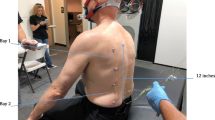Abstract
Despite human laboratory and field studies that have demonstrated a reasonable safety profile for TASER brand conducted electrical weapons (CEW), the results of some swine studies and arrest related deaths temporal to the use of the CEWs continue to raise questions regarding cardiac safety. TASER International, Inc., has released a new CEW, the TASER X2, touted to have a better safety profile than its long-standing predecessor, the TASER X26. We have developed a model to assess the relative cardiac safety of CEWs and used it to compare the TASER X2 and the TASER X26. This safety model was also used to assess the relative safety of an experimental probe design as compared to the standard steel probe. Our results suggest that the TASER X2 has an improved safety margin over the TASER X26. The new probe design also has promise for enhanced cardiac safety, although may have some disadvantages when compared to the existing design which would make field use impractical.






Similar content being viewed by others
References
Vilke G, Bozeman W, Chan T. Emergency department evaluation after conducted energy weapon use: review of the literature for the clinician. J Emerg Med. 2011;40:598–604.
Holder E, Robinson L, Laub J. Study of deaths following electro muscular disruption. 2011. https://www.ncjrs.gov/pdffiles1/nij/233432.pdf.
Zipes D. Sudden cardiac arrest and death associated with application of shocks from a TASER electronic control device. Circulation. 2012;125(20):2417–22.
Dennis A, Valentino D, Walter R, Nagy K, Winners J, Bokhari F, Wiley D, Joseph K, Roberts R. Acute effects of TASER X26 discharges in a swine model. J Trauma. 2007;63:581–90.
Valentino D, Walter R, Dennis A, Margeta B, Starr F, Nagy K, Bokhari F, Wiley D, Jospeh K, Roberts R. TASER X26 discharges in swine: ventricular rhythm capture is dependent on discharge vector. J Trauma. 2008;65:1478–87.
Nanthakumar K, Billingsley I, Masse S, Dorian P, Cameron D, Chauhan V, Downar E, Sevaptsidis E. Cardiac electrophysiological consequences of neuromuscular incapacitating device discharges. J Am Coll Cardiol. 2006;48(4):798–804.
Lakkireddy D, Wallick D, Verma A, Ryschon K, Kowalewski W, Wazni O, Butany J, Martin D, Tchou P. Cardiac effects of electrical stun guns: does position of barbs contact make a difference? Pacing Clin Electrophysiol. 2008;31:398–408.
Ho JD, Dawes DM, Reardon RF, Strote SR, Kunz SN, Nelson RS, Lundin EJ, Orozco BS, Miner JR. Human cardiovascular effects of a new generation conducted electrical weapon. Forensic Sci Int. 2011;204(1–3):50–7.
Cao M, Shinbane J, Gillberg J, Saxon L. TASER-induced rapid ventricular myocardial capture demonstrated by pacemaker intracardiac electrograms. J Cardiovasc Electrophysiol. 2007;18:876–9.
Ideker R, Dosdall D. Can the direct cardiac effects of the electric pulses generated by the TASER X26 cause immediate or delayed sudden cardiac arrest in normal adults? Am J Forensic Med Pathol. 2007;28:195–201.
Dawes D, Ho J, Cole J, Reardon R, Lundin E, Terwy K, Falvey D, Miner J. Effect of an electronic control device exposure on a methamphemamine-intoxicated animal model. Acad Emerg Med. 2010;17:436–43.
Lakkireddy D, Wallick D, Ryschon K, Chung M, Butany J, Martin D, Saliba W, Kowalewski W, Natale A, Tchou P. Effects of cocaine intoxication on the threshold for stun gun induction of ventricular fibrillation. J Am Coll Cardiol. 2006;48(4):805–11.
Wu J-Y, Sun H, O’Rourke A, Huebner S, Rahko J, Webster J. Taser blunt probe dart-to-heart distance causing ventricular fibrillation in pigs. IEEE Trans Biomed Eng. 2008;55(12):2768–71.
Ho JD, Dawes DM, Reardon RF, Lapine AL, Dolan BJ, Lundin EJ, Miner JR. Echocardiographic evaluation of a TASER-X26 application in the ideal human cardiac axis. Acad Emerg Med. 2008;15(9):838–44.
Dawes DM, Ho JD, Reardon RF, Miner JR. Echocardiographic evaluation of TASER X26 probe deployment into the chests of human volunteers. Am J Emerg Med. 2010;28(1):49–55.
Ho JD, Reardon RF, Dawes DM, Johnson MA, Miner JR. Ultrasound measurement of cardiac activity during conducted electrical weapon application in exercising adults. Ann Emerg Med. 2007;50(3):S108.
Dawes D, Ho J, Reardon R, Sweeney J, Miner J. The physiologic effects of multiple simultaneous electronic control device discharges. West J Emerg Med. 2010;11(1):49–56.
Dawes D, Ho J, Reardon R, Miner J. The cardiovascular, respiratory, and metabolic effects of a long duration electronic control device exposure in human volunteers. Forensic Sci Med Pathol. 2010;6:268–74.
Beason C, Jauchem J, Clark CD, Parker J, Fines D. Pulse variations of a conducted energy weapon (similar to the TASER X26 device): effects on muscle contraction and threshold for ventricular fibrillation. J Forensic Sci. 2009;54(5):1113–8.
Ho J, Dawes D, Miner J, Kunz S, Nelson R, Sweeney J. Conducted electrical incapacitation during a goal-directed task as a function of probe spread. Forensic Sci Med Pathol. 2012;8(4):358–66.
Conflict of interest
TASER International, Inc., provided funding and material support for this study. Dr. Ho is the medical director for TASER. Dr. Dawes is a consultant to TASER. Drs. Ho and Dawes own shares of stock in the company. Drs. Moore and Miner have no conflicts to declare.
Author information
Authors and Affiliations
Corresponding author
Rights and permissions
About this article
Cite this article
Dawes, D.M., Ho, J.D., Moore, J.C. et al. An evaluation of two conducted electrical weapons and two probe designs using a swine comparative cardiac safety model. Forensic Sci Med Pathol 9, 333–342 (2013). https://doi.org/10.1007/s12024-013-9422-x
Accepted:
Published:
Issue Date:
DOI: https://doi.org/10.1007/s12024-013-9422-x




